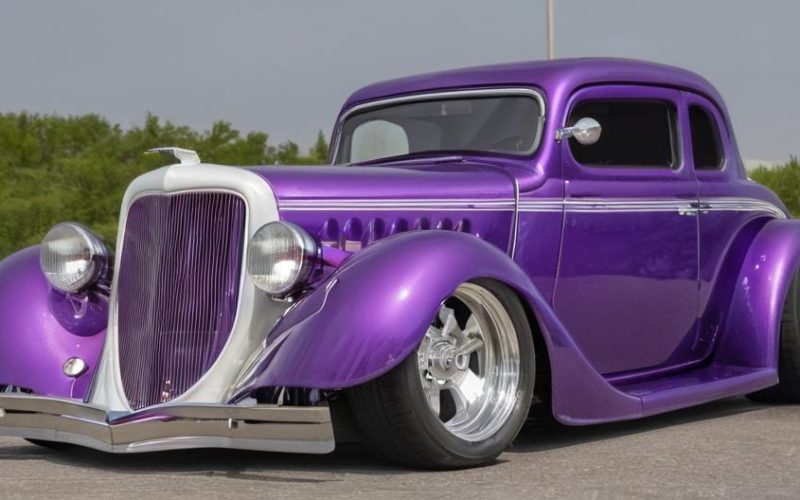Key Take Aways About Electric Street Rod Conversions
- Combining classic aesthetics with modern electric efficiency enhances vintage cars.
- Electric conversions involve more than just a simple motor swap—considerations include motors, batteries, and charging systems.
- Battery placement and realistic range expectations are crucial for practicality.
- Converting to electric can be costly, though savings on fuel may offset expenses.
- Regulatory requirements vary, necessitating thorough research to ensure compliance.
- Successful conversions maintain classic charm with silent, efficient operation.
- Electric conversions offer a blend of passion and historical preservation.

Understanding Electric Street Rod Conversions
Transforming a classic street rod into an electric powerhouse isn’t just an exercise in technology; it’s a nod to the harmony of old-school cool and modern efficiency. The very thought of a vintage car, in all its nostalgic glory, gliding silently down the road can be both thrilling and mystifying. And in case you thought an electric street rod was just about plugging in some batteries and calling it a day, well, you might want to think again.
Why Go Electric with Your Street Rod?
Consider this: the timeless charm of cruising in a classic car married with the smooth, green efficiency of an electric motor. It’s more than just an environmental statement; it’s about giving these historical beauties a chance to roll on for another few decades without the guilt trip of heavy emissions. If you’ve ever listened to the soft rumble of a classic car engine and thought it was music to your ears, now imagine it as a symphony of silence and sustainability.
The Nuts and Bolts (or Lack Thereof)
Electric conversions, besides being a trendy topic of late-night garage discussions, present a practical set of challenges and rewards. First off, there’s the motor replacement. Wave goodbye to that gas-guzzling beast under the hood and say hello to electric motors. But hold those horses, or watts. It isn’t just a motor swap; it’s a change in mindset. Batteries, controllers, and charging systems become your new best friends.
Battery Placement and Range
Batteries in an electric street rod are like finding the right pair of shoes. They gotta fit, look good, and not wear out after a few miles. Placement is key—you don’t want your car tilting like it’s doing a poor version of the cha-cha. As for range, well, plan your road trips with a dose of realism. Unless your goal is to set up camp at every charging station, knowing how far those batteries will take you is crucial.
Personal Stories from the Garage
Take Joe, a retired engineer who decided retirement was the perfect time to turn his 1950s roadster electric. Armed with a cup of coffee and a YouTube playlist of conversion tutorials, Joe swapped out his engine for an electric motor. Sure, he needed help from a few car-savvy buddies and maybe a miracle or two, but the result? An electric street rod that still turns heads and a garage that smells less like gasoline and more like sweet victory.
Costs Involved in Conversions
Let’s talk numbers. Electric car conversions are not exactly penny savers. You’re looking at a range somewhere between “I hope my spouse doesn’t find out” to “I might need a small loan for that.” Motors, batteries, and all the little bits add up fast. But then again, what’s the price of passion? Plus, less money spent on fuel means more saved for those chrome finishes.
Regulatory Roadblocks or Speed Bumps
Navigating the regulations around converting a street rod to electric can feel like driving without a map. You’ll need to check local laws regarding vehicle emissions and modifications, ensuring your project doesn’t end up like a car stuck in neutral. Some regions are catching on to this trend, making it easier for electric conversions to hit the road legally, but it’s always good to dot those i’s and cross those t’s.
On the Road Again
Once the conversion is done and the legal hoops are jumped through, it’s time for that first drive. If you’ve done the math right and wired things correctly, it should be smooth sailing—or driving. The feeling of handling a silent, responsive vehicle while still having that classic charm can be akin to finding a secret recipe. It’s not just a car at this moment; it’s a masterpiece of past and future.
Final Thoughts
Electric street rod conversions are more about passion than practicality, more about preserving history than breaking speed records. The electric highway opens a whole new world for classic cars. For those willing to take on the challenge, the electric future holds as much charm as the past. Even as the world changes gears towards electric, these cherished vehicles find a fresh lease on life, ensuring that our automotive history rolls on, albeit a lot quieter.
